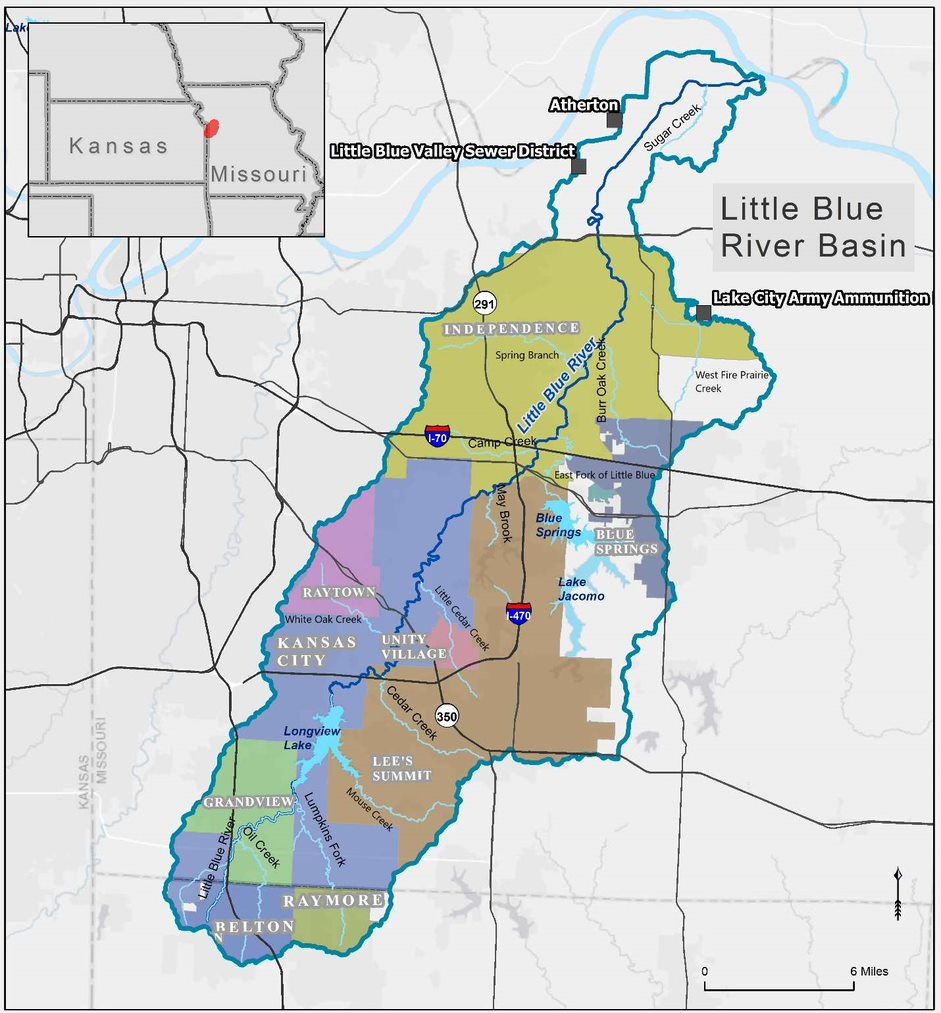STUDY AREA
The Little Blue River Basin encompasses approximately 263 square miles in Jackson County, MO. The basin includes the communities of Blue Springs, Grandview, Independence, Kansas City, MO, Lee's Summit and Raytown.

STUDY GOALS
This study aims to:
- Reduce Flood Risk: Identify and evaluate measures to reduce the frequency and severity of flooding in the basin.
- Improve Water Quality: Assess current water quality conditions and explore opportunities to enhance water quality for both human and ecological health.
- Protect and Restore Ecosystem Health: Evaluate the health of the basin's ecosystem and identify ways to protect and restore vital habitats.
- Enhance Community Resilience: Develop strategies to help communities better prepare for and recover from flood events.